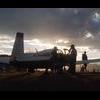Mooney IFR Students' Thread
-
Members Online
- sdmideas
- IvanP
- Cody Stallings
- hammdo
- Rocket_Driver
- FoxMike
- CCAS
- Marvin
- 47U
- 1967 427
- DanM20C
- Nico1
- takair
- GTO1969
- gabez
- Hank
- Niko182
- billy hellcat
- donkaye
- Dammit Bill
- redbaron1982
- wombat
- Roseusaf
- Ragsf15e
- Alan Fox
- Max Clark
- Lax291
- markazzarito
- rwabdu
- Kelpro999
- Alan Maurer
- varlajo
- Joshua Blackh4t
- shawnd
- N201MKTurbo
- rturbett
- PeytonM
- 67 m20F chump
- Steve Dawson
- Dean Showalter
- Matthew P
- jamesm
- Scottknoll


Recommended Posts
Join the conversation
You can post now and register later. If you have an account, sign in now to post with your account.